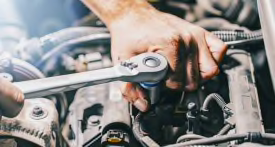How to Buy a New Car in Today’s Challenging Market
Availability has improved over the past year, but production favors higher-priced models

New-car dealers are finally showing more vehicles on their lots as inventory creeps back upward. And because of a variety of factors—inflation, higher interest rates, a year’s worth of new-car scarcity—demand for cars has cooled off a bit. Even so, availability and deals are still scarce for certain models. In other words, it’s a time when those who have to buy a new car should approach the process carefully. It’s still possible to have to pay thousands over the manufacturer’s suggested retail price to get the car you want. But a little research and some flexibility can go a long way.
Consumer Reports is no stranger to the wild ride this market has given consumers over the past few years. Relying on our staff of secret buyers, we typically buy 40 to 50 new cars every year to test the most popular models and trims. But until recently, we have struggled to keep pace, and have faced long waiting periods for some of the models we needed to test. Since the beginning of 2023, we’ve sealed the deal on dozens of new cars, including the Jeep Grand Cherokee 4xe and the Toyota Prius. Unlike last year, however, when we were often paying thousands above MSRP, most of this year’s acquisitions have been closer to list price.
“It’s still not a great time to buy a new car, but if you need something now, there are options,” says Gabe Shenhar, associate director of CR’s auto testing program.
Weathering the Storm
As CR’s expert buyers have found, the car you want is out there somewhere. It often comes down to having patience and being ready to buy as soon as you find something you like. According to a recent report from Cox Automotive, manufacturers have been prioritizing more expensive luxury cars. Increasing sales of them have pushed the average price of a new car ever higher. But that doesn’t mean there aren’t more affordable models available.
“It’s a good idea to focus on the model you want, and to know what all of your must-have options are and how much they cost,” Shenhar says. “Do your homework. Learn the difference between the dealer cost and the MSRP, and locate two or three vehicles by searching on the manufacturer’s website or on websites like TrueCar or Cars.com, for example.”
In this market, be ready to accept that prices may not be as negotiable as they were a few years ago. If you find the car you want at a reasonable price, and with favorable financing or lease terms, you’ve already won half the battle.
Our main advice for buyers in this tricky market is to act quickly and negotiate from an informed perspective. That can make the difference between getting a fair deal and getting no deal.
Prearrange financing. Figure out your budget and get financing based on what you can afford to pay monthly and as a down payment. It’s always a good idea to get financing set up through your bank or credit union before going to a dealership to look at cars. That gives you a baseline against which you can compare the terms of dealer financing, which may or may not be a good deal. Sometimes dealer financing benefits from manufacturer subsidies that allow the dealer to offer a lower interest rate than you can get from your bank. Having financing ready to go will also give you a leg up if you’re looking at a sought-after car that isn’t likely to remain on the dealership lot for long.
Don’t borrow too much. If you paid 16 percent over MSRP for a Kia Telluride, for example, consider what it will be worth when you trade it in. For example, if you buy an SUV that depreciates $15,000 off the sticker price in three years, but you paid $8,000 over MSRP this year for it, that means it cost you $23,000 to own it for that short period. Cars are depreciating assets; overpaying for a new car is likely to compound your long-term losses. (See the worst car deals right now.)
The same goes for a used car that costs almost as much at 2 years old as it did when it was new. You don’t want to get a loan on a car that’s going to lose a lot of value over the next couple of years, or you may end up underwater on the loan, where you owe more than the car is worth for an extended period.
See what’s available. If you’re shopping for a new car, dealers near you may not have exactly what you’re looking for. Instead of going to the dealership to see what it has, look on its website or call first. You may need to search at several dealers to find something that’s close to what you’re looking for.
Consider an EV. When gasoline prices spiked in 2022, demand for EVs spiked. Now that prices are lower again, and there are more models coming to market, EV availability has become more robust, which means that it could be easier to score a deal on one.
















